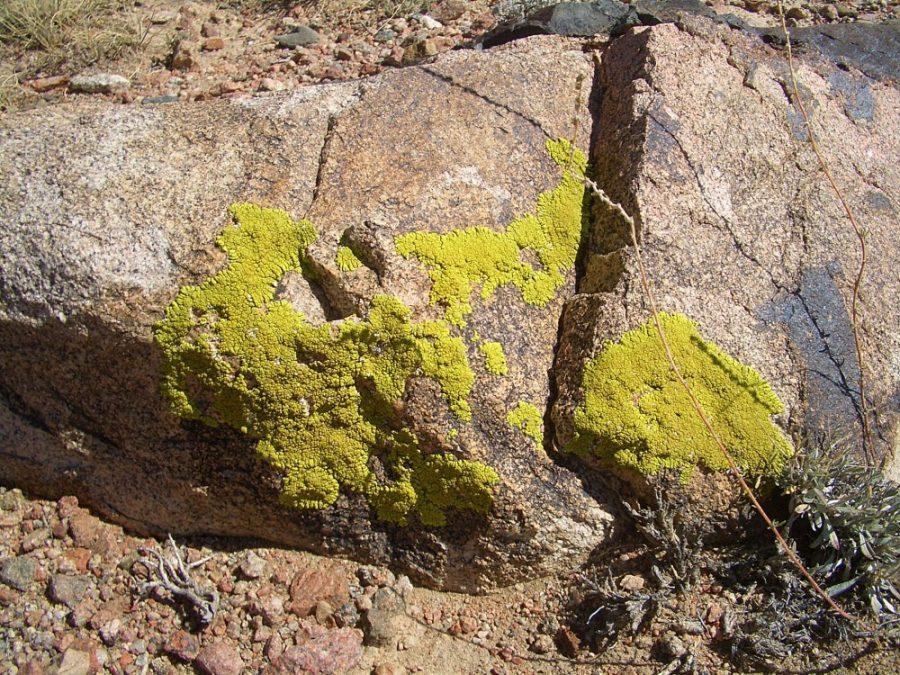New research from UA’s School of Natural Resources and the Environment indicates the desert heat may be cooling down, but this isn’t a positive thing for the environment.
Austin Rutherford, one of the authors of the study and a doctoral student in the school, discovered that climate change and altered precipitation patterns are killing off dark-colored species of mosses and lichens, which are responsible for trapping heat and energy emitted by the sun.
This leaves behind large patches of light-colored species of cyanobacteria—a group of bacteria that uses photosynthesis and produces oxygen—which reflects energy from the sun back into the atmosphere. Because the light cyanobacteria have a high albedo, or amount of sunlight reflected, heat does not as strongly affect the surface of the planet.
Albedo is an important concept in this topic. It determines how much energy is retained on Earth based on the color of the surface. Light-colored organisms reflect more, and dark colors absorb more.
This principle explains why it is difficult to wear black clothing during the Arizona summer; the darker colors trap the Sun’s heat and thus warm up the individual wearing them.
RELATED: Flying the friendly skies: UA scientists use airplanes to research climate change
While this does indicate that temperatures could fall as less heat is trapped in the topsoil, Rutherford warned that there are more dire consequences caused by the death of dark-colored organisms that live on the surface of the soil. These effects would be most prominent in the biocrust, which are living communities on the surface of the soil in deserts.
“The consequence of that is that we are losing biocrust [organisms living at the soil surface, like cyanobacteria and lichens] species that are important for stabilizing the soils, as well as putting more nutrients in the ground,” Rutherford said. “We’re losing that fertility of the soil, as well.”
This could result in more dust events, dangerous for those with asthma, as well as the loss of fertile soil and the erosion of soil.
With the current study, however, the consequences are only being suggested, and Rutherford said more research needs to be done, particularly with climate modeling and climate change manipulation plots.
Rutherford was inspired to do this research while working in Utah for the U.S. Geological Survey as a technician. It began when he and his colleagues noticed there was large die-offs of dark-colored species mosses, lichens and cyanobacteria on their climate change manipulation plots. They then focused on the Utah area, where they had noticed these changes.
This was the first study done on a small scale. Most research on the topic is done on a larger scale with remote sensing technology. There were specific reasons why Rutherford and his team decided to focus in on a smaller area.
RELATED: University research team identifies the impacts of forest death on other continents
“We wanted to quantify this change directly with biocrust,” Rutherford said. “We wanted to narrow the focus in to look at specific processes driving that change in albedo.”
This allowed Rutherford and his team to find the mechanisms that led to the change, particularly climate change, and to determine what some possible consequences of the die-offs would be.
Though his current research is focused on the encroachment of woody plants and how it affects the environment, Rutherford hopes that someone will continue this research. Someone who wishes to go further with the topic would need to see the effects of dark moss and lichen die off on a larger scale and would need more sophisticated remote sensing technology in order to separate the biocrust and the plants on the surface in their data.
“We did an exercise that shows that it may be possible, that the change in albedo …might influence a global process,” Rutherford said. “But it was more of a demonstrative exercise. Someone who knows climate models intimately would be able to start putting in different pieces in those models to reflect the changes that we saw.”
Going further, researchers might be able to determine how the death of biocrust communities in aid environments would impact the climate on a global scale.
Follow Nicole Morin on Twitter.















